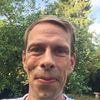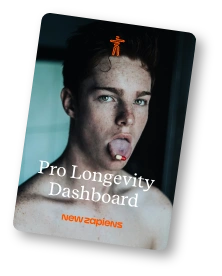Recovery and sleep: the missing piece to a long and healthy life

We push harder, train smarter, and optimize everything – yet true progress isn’t just about effort. Recovery is where the magic happens. It’s not a luxury but a necessity, the foundation of both physical and mental well-being. And at the core of it all? Sleep. Without deep, restorative rest, even the best workout or nutrition plan won’t unlock your full potential.
That’s why we should redefine sleep and regeneration with science-backed solutions. In this article, you’ll learn why recovery matters, how sleep fuels longevity, and how tools like the BLACKROLL® solutions for recovery and sleep can help you wake up stronger, sharper, and ready for more.
Why recovery is the key to a long and healthy life
Imagine pushing your body to its limits – whether through an intense workout, a long day of mental exertion, or simply the daily hustle of life. Now imagine never giving it a chance to reset, rebuild, and recharge. Over time, that constant strain wears you down, slowing your progress and impacting your overall well-being. Recovery isn’t just about taking a break; it’s about giving your body the space to heal, adapt, and become stronger. It’s the key to maintaining vitality, resilience, and longevity.
For some, recovery might mean cooling down after a training session, while for others, it’s the deep exhale at the end of a stressful day. No matter how you approach it, recovery is what keeps you moving forward – physically, mentally, and even on a cellular level.
What does recovery really mean?
Recovery isn’t passive – it’s an active, dynamic process happening within your body and mind. Picture your muscles rebuilding after exercise, your brain sorting through the day’s information, and your immune system reinforcing its defenses. Every moment of true rest is an opportunity for renewal.
Recovery doesn’t look the same for everyone. A professional athlete may rely on structured regeneration techniques, while someone navigating daily stress may benefit from a simple meditation, a slow evening walk, or a few deep breaths. What matters most is consistency – regularly making space for your body and mind to recover.
How recovery fuels longevity
Long-lasting health isn’t just about working hard; it’s about recovering smart. The better your body can repair itself, the longer and healthier you’ll live. Recovery doesn’t just make you feel better – it actively builds the foundation for longevity.
Stronger muscles, stronger you
Every time you challenge your body – whether lifting weights or just getting through a demanding day – your muscles experience micro-tears. Recovery is when these tears heal and strengthen, making you more resilient. Without proper recovery, these tiny breakdowns accumulate, leading to fatigue, injury, and decreased performance over time.
Cellular rejuvenation: the power of renewal
Deep within your body, recovery supports a process called autophagy – your cells’ way of cleaning house. Damaged and worn-out cells are broken down and replaced with new, healthy ones. This process is essential for preventing age-related diseases and keeping your body in peak condition for years to come.
Lower stress, stronger heart
Chronic stress keeps your cortisol levels elevated, putting unnecessary strain on your heart and immune system. Recovery phases bring those levels back down, allowing your body to reset. Regular relaxation – whether through deep sleep, movement, or mindfulness – reduces the risk of cardiovascular disease, sleep disorders, and mental fatigue.
Sharper mind, clearer thinking
Ever noticed how everything seems harder when you’re exhausted? Recovery isn’t just about physical health; it’s essential for mental clarity and cognitive function. Without proper rest, concentration slips, creativity diminishes, and stress takes a heavier toll. Taking time to recover regularly keeps your mind sharp, adaptable, and resilient.
The science behind sleep and recovery
If recovery is the key to longevity, sleep is the most powerful recovery tool we have. While you sleep, your body carries out essential repair work, strengthening muscles, boosting immunity, and restoring mental balance.
Yet, despite its critical role, many people struggle with sleep deprivation or poor sleep quality. Stress, inconsistent routines, and constant exposure to screens disrupt our natural sleep-wake cycles, making it harder to reach the deep, restorative rest we need.
Sleep: the ultimate recovery
Sleep isn’t just rest – it’s the time when your body does its most intensive recovery work. Throughout the night, you cycle through different sleep stages, each playing a role in restoring your health. Deep sleep, in particular, is when your body produces growth hormones that repair muscles, regenerate cells, and fortify your immune system. At the same time, your brain processes and organizes information, allowing you to wake up sharper and more focused.
The hidden dangers of sleep deprivation
Missing out on high-quality sleep doesn’t just make you tired – it impacts every aspect of your health:
- Weakened performance: Without proper recovery, your muscles fatigue faster, and your endurance declines.
- Compromised immunity: A lack of sleep weakens your body’s ability to fight off illness and recover from stress.
- Hormonal imbalances: Disruptions in insulin and cortisol levels increase the risk of weight gain, inflammation, and metabolic disorders.
- Cognitive strain: Sleep deprivation leads to irritability, brain fog, poor concentration, and mood swings.
In today’s fast-paced world, where productivity is prioritized over rest, it’s easy to underestimate the importance of quality sleep. But true longevity isn’t just about how much you do – it’s about how well you recover. That’s where tools for recovery and sleep come in, helping you to unlock your full potential.
Tips for better sleep and sustainable recovery
Remember: Restful sleep is essential for optimal recovery – and the foundation of longevity. Besides the tools for recovery intentional changes in your daily routine can in general significantly improve your sleep quality. So here are some tips to help you enhance your sleep and boost your recovery:
1. Establish a nighttime routine
A consistent bedtime routine signals your body that it’s time to wind down. Regularity is key, and even small rituals can make a big difference.
Start 30 to 60 minutes before bed with relaxing activities. Stretching or yoga can help release muscle tension and prepare your body for sleep. Meditation or breathing exercises are also excellent ways to relax your mind. A quick 5-minute breathing session is often enough to ease tension and clear your head before slipping under the covers.
2. Optimize your sleep environment
Your sleeping environment plays a significant role in the quality of your recovery. A cool, dark, and quiet atmosphere is ideal for restful sleep.
Maintain a room temperature between 16 and 18 degrees Celsius to prevent overheating. Darkness is equally important, as even small light sources can disrupt melatonin production. Blackout curtains or a sleep mask can effectively block unwanted light.
3. Reduce stress before bedtime
Stress is one of the most common causes of difficulty falling asleep. Our modern lifestyles, marked by constant connectivity and endless screen time, make it challenging to unwind in the evening.
Avoid screens like smartphones, tablets, and TVs at least an hour before bedtime. The blue light emitted by these devices suppresses melatonin production, making it harder for your body to feel tired. Instead, use this time for relaxing activities like reading or practicing mindfulness.
A cup of calming herbal tea, such as chamomile or lavender, can also help you transition into relaxation mode.
4. Maintain a consistent sleep schedule
Our bodies thrive on routine. A consistent sleep-wake schedule helps regulate your internal clock and improves sleep quality. Try to go to bed and wake up at the same time every day – even on weekends.
While sleeping in might seem tempting, it can disrupt your natural rhythm and make it harder to fall asleep at night. If you feel tired during the day, a short 20-minute power nap is a better alternative.
5. Nutrition and exercise as sleep boosters
What you eat during the day and how active you are can greatly influence your sleep. Avoid caffeine in the afternoon and evening, as it can keep you awake longer. Opt for a light meal two to three hours before bedtime to avoid overloading your digestive system.
Regular exercise also contributes to better sleep quality. However, avoid intense workouts right before bed, as they can stimulate your body and make it harder to relax. A gentle evening walk or light yoga session is a better choice.
By integrating these strategies into your routine, you can set the stage for better sleep and recovery – helping you wake up refreshed and energized each day.
Helpful tools for recovery and healthy sleep from BLACKROLL®
In addition to the general recommendations some tools like the BLACKROLL RECOVERY BLANKET, BLACKROLL RECOVERY PILLOW or the BLACKROLL RECOVERY BASE can help you to improve your sleep quality significantly and bring you closer to your goal of a healthier, longer life.
While the BLACKROLL RECOVERY BLANKETS provide thermoregulating properties for a pleasant sleep climate, the BLACKROLL RECOVERY PILLOW ergonomically supports your head and neck and the BLACKROLL RECOVERY BASE ist high-quality mattress adapting perfectly to your body for optimal support. With their scientifically approach this tools can really be a gamechanger.
Sleep – your power source for a long and healthy life
Picture this: You wake up feeling truly refreshed, your body strong, your mind sharp. You move through your day with energy, clarity, and resilience. This isn’t just luck – it’s the result of deep, restorative sleep.
Recovery isn’t a luxury; it’s the secret weapon for longevity. It rebuilds your muscles, strengthens your immune system, and fuels your brain. While you sleep, your body is hard at work – repairing, regenerating, and preparing you for whatever comes next. Science backs it up: quality sleep isn’t just about feeling good; it actively reduces the risk of chronic diseases like heart disease, diabetes, and neurodegenerative disorders.
And the best part? You control it. By prioritizing your recovery and optimizing your sleep, you’re investing in a healthier, longer, and more vibrant life. So, are you ready to take your recovery seriously? Because your future self will thank you for every great night’s sleep.
Author: Fabian Peters
Nature lover, health enthusiast, managing director and editorial director of the health portal Heilpraxinet.de




